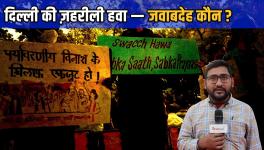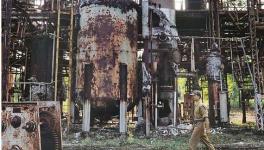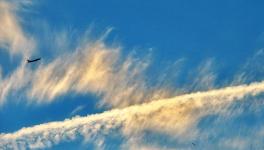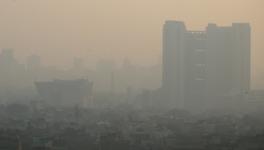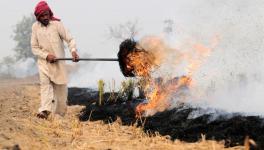Air Quality Dips to ‘Hazardous’ in National Capital Ahead of Diwali
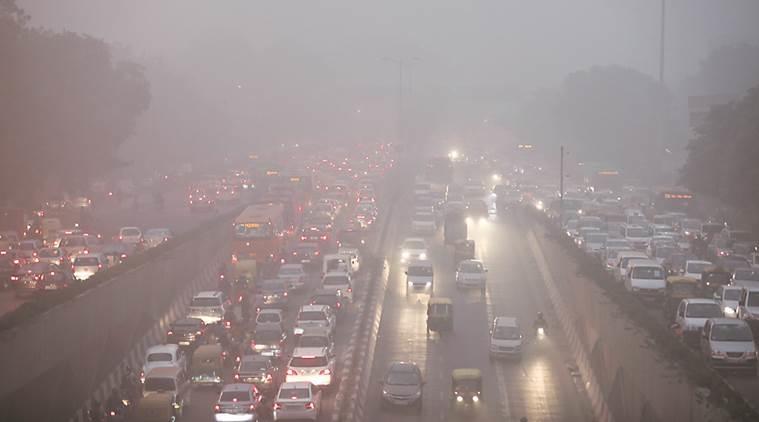
On Monday, the residents of Delhi woke up to a thick blanket of smog which brought the air quality under the ‘hazardous’ category amid warnings by IMD officials in the national capital, two days ahead of Diwali.
The air quality index (AQI) around Mandir Marg recorded PM10 levels at 707 and PM 2.5 at 663, while PM10 levels were 681 and 676 around Jawaharlal Nehru Stadium and Major Dhyan Chand National Stadium, respectively, as reported by ANI. On Monday morning, pollutant PM2.5 was at a "hazardous" level in Okhla – at 644 – which is over 20 times the safe limit prescribed by the World Health Organization (WHO), according to the data from the Delhi Pollution Control Board.
PM2.5 count implies presence of the particles of any substance, which have a diameter of less than 2.5 micrometre. Particles in this size range make up a large proportion of dust that can be drawn deep into the lungs. Larger particles tend to be trapped in the nose, mouth or throat, and can cause respiratory diseases.
Air Quality Index between 0-50 is considered “good”, 51-100 is considered “satisfactory”, 101-200 is considered “moderate”, 201-300 is considered “poor”, 301-400 is considered “very poor” and 401-500 is considered “severe”.
On Sunday, in a short-lived relief for the Delhiites, the pollution level had come down to fall under the the ‘poor’ category after oscillating between ‘very poor’ and ‘severe’ for several days. The overall air quality index (AQI) was recorded at 231 on Sunday which falls under the ‘poor’ category.
System of Air Quality Forecasting & Research (SAFAR) on Saturday, however, had predicted deterioration in the air quality from Monday. It had warned that the high level of moisture in Delhi’s atmosphere, a fall in temperature, and upper winds from stubble-burning sites will adversely affect the air quality of the national capital.
Visibility on roads was low this morning, as against on Sunday when air quality had significantly improved due to increased wind speed. According to official reports by SAFAR, as expected, there is a significant bio-mass pollution in Delhi, which has placed air quality in the very poor category despite moderate surface wind speed. The contribution of stubble-burning to the pollution in the national capital is expected to be 24 per cent today.
Read more: Delhi’s Hazy Autumn Sky: Reasons to See Beyond Stubble Burning
The Indian Institute of Tropical Meteorology also said that stubble-burning and other sources of air pollution in the Northwest region of India were significantly less on Saturday, as compared to Thursday, but warned of a sharp increase in PM2.5 concentration from today.
But while the toll taken by particulate matter — PM 10, 2.5 and 1 — has been the focus of measures to combat pollution, another alarming aspect, experts said, has been ignored: the spike in nitrogen dioxide and benzene levels.
Nitrogen dioxide, on reacting with the sunlight, creates photochemical smog, which lends the yellowish tinge to the city haze. Its levels increase with increasing traffic, and data shows that the peaks of the gaseous compound coincide with peak traffic hours in the morning and evening. The most common source of nitrogen dioxide is combustion of petrol and diesel.
Read more: Stubble Burning and Smog: Farmers as Scapegoats
Levels of benzene, a carcinogen, have also started increasing over the past week. With a dip in temperature, concentration of benzene — even short exposure to which is harmful — increases. Its peak concentration is usually seen at night
As per the data released by Central Pollution Control board, on October 31, at the India Gate, NO2 levels in the air reached a peak of 215.8 micrograms per cubic meter (µg/m3) — over 2.5 times more than the acceptable limit of 80 µg/m3. On subsequent days, peak concentration remained around twice the acceptable limit — it was the worst from 9 am-10 am and 5 pm-7 pm.
The concentration of benzene, too, was worrying. At the same station, on October 31, the highest level was recorded at 11 pm at 23 µg/m3 against the acceptable limit of 5 µg/m3.
According to a source apportionment study carried out for Delhi by scientists from the National Environmental Engineering Research Institute, diesel engine exhaust contributes to 26-58 per cent of total benzene; 14-23 per cent comes from vehicle exhaust; 10-18 per cent from evaporative exhaust; and the rest from auto repair, degreasing and natural gas.
The Supreme Court-appointed Environment Pollution Control Authority (EPCA) has urged Delhiites to use public transport for the first 10 days of November to keep a check on pollution. Noting that private vehicles contribute to 40 per cent pollution in Delhi-NCR, the EPCA has urged people to reduce the use of private vehicles during this period and use public transport or other means.
The DPCC has directed the transport department and the traffic police to intensify checking of polluting vehicles and control road congestion till November 10. Construction work involving excavation is banned; no stone-crushers and hot-mix plants that generate dust cannot be run at this time.
As concern over air pollution grows, air purifiers (which until three years back were a rare commodity bought mainly by those with respiratory ailments), have now emerged as a ‘sunrise’ sector where sales are up by nearly three-fold in two years.
From MNC giants to small-scale producers, several companies are offering air purifiers ranging from Rs 7,000 – for one with “basic” features – to Rs 1 lakh for a more “sophisticated” one. The biggest market for air purifiers is in North India, which has many of the worst air-polluted cities in the world. These include Delhi, Noida, Ghaziabad, Faridabad, Jaipur, Kanpur, Varanasi, Lucknow and Ludhiana, many of which have already seen “severe” AQI in excess of 400, even when Diwali is yet to be celebrated.
Read more: ‘Environmental Emergency’ in Delhi, But Fuel Guzzlers Still Rule Roads
Get the latest reports & analysis with people's perspective on Protests, movements & deep analytical videos, discussions of the current affairs in your Telegram app. Subscribe to NewsClick's Telegram channel & get Real-Time updates on stories, as they get published on our website.









